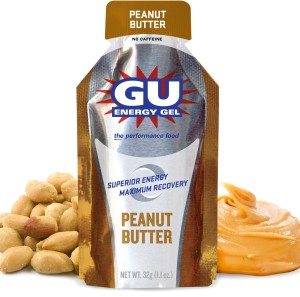Athletes are well aware that carbohydrates are their main source of fuel, particularly during activity. Seems simple enough, however, the word carbohydrate itself opens a can of worms, worth dissecting. Carbohydrates are categorized as either simple or complex, and complex they are. Simple carbs are also known as sugars, occurring in the form of either a monosaccharide (1 sugar unit) or a disaccharide (2 units). Complex carbs are polymers of simple carbs (many sugar units). The unit referred to, is particularly scrutinized, since it is a functional ingredient in sports drinks and gels. Logically, sports products contain carbs, as mentioned, that is the energy currency, and yes, they are cpresent in the ingredient list in all varieties and combinations. To analyze how these combinations are decided upon, may answer the layman’s confusion as to what may be the optimal sugar for athletic performance?
In reality, there appears to be no major difference on any one carb used in sports products (fructose, maltodextrin, sucrose, glucose, dextrose, galactose) on athletic performance itself, however absorption rate may affect gastrointestinal sensitivities and thus varying combinations may suit individual preference differently. Degree of sweetness may also impact appeal, which often determines whether the product is consumed or not. Here are the facts, in hope that this will help the individual athlete determine his/her optimal sugar?
Factors that affect the absorption rate of the sugar include concentration, volume, osmolarity, and the Glycemic Index of the carbohydrate. Concentration is defined as the energy content (calories) of the carbohydrate in solution. A small concentration of carbohydrate results in rapid travel from stomach to small intestine. The shorter the chain length of the single saccahrides chained together, the higher the concentration gradient. Research has shown that a 6 – 8% concentration of the carbs has an optimal gastric emptying rate. Stronger concentrations in the stomach further attracts more fluids to enter the gastric system, not only resulting in a bloated, uncomfortable, sluggish stomach, simultaneously draws fluids away from the their important function in muscle contraction.
The Glycemic index measures how fast the carbohydrate of a particular food is converted to glucose and enters the bloodstream. Low Glycemic index carbs taken before exercise has been hypothesized to lengthen the carbs availability as a fuel source. There is insufficient evidence, however, a low glycemic index prior to activity does enhance performance. Moderate to high Glycemic Index Carbs consumed during activity raises carbohydrate availability and enhances endurance and performance (1.)
Fructose, is a monosaccharide, and is also the preferred simple sugar that restores liver glycogen. Fructose is also fairly low on the glycemic index tables, and therefore does not have the spiking effect on insulin. These qualities, as well as it being a sweetening agent, favor fructose as a carbohydrate used in sports products. However, it does have a slow gastric emptying rate when compared to the other sugars because of its unique digestive pathway. Sports drinks that contain mainly fructose may cause gastrointestinal distress due to its lower absorption rate. Fructose is also restrictive in that the amount that the body can absorb is limited. Fructose as a solitary carb is thus not the ideal for optimal performance.
Sucrose is absorbed more rapidly than fructose. It is a simple, easily digestible sugar with a mid-range glycemic index. Furthermore its pleasant sweetness and palatability adds appeal. Consumers are often concerned that sucrose, being table sugar, causes weight gain. Certainly in large amounts, as with any other sugar, sucrose may have an effect on weight, however, as an ingredient in a sports drink, used in moderation it has positive qualities as a fuel source.
Maltodextrins because of its low osmolarity and complete solubility is an ingredient found in many sports nutrition products. Osmolarity and solubility refers to particle concentration, and being on the lower end, with complete solubility means less risk of gastrointestinal distress. Maltodextrin is a polysaccharide with building blocks of glucose. Even though the bonds still need to be broken for fuel availability, the process is simple digestion. Glucose itself, requires minimal digestion since it enters the blood stream immediately after consumption, providing an instant source of energy.
Dextrose is a simple sugar with a high glycemic index and thus believed to provide a rapid source of fuel. It is also known to stimulate gastric emptying as well as sodium reabsorption from the kidneys, rating high on hydration strategy. Unlike fructose, dextrose requires no liver metabolizing before getting into muscles as a fuel. Dextrose may add appeal with its pleasant sweetness. It is therefore a positive ingredient for sports products, however caution is recommended for higher glycemic index carb as the solitary ingredient since a sudden high levels of insulin may lead to a rapid, and possibly excessive, transport of blood glucose into the tissues, resulting in low blood sugar.
Carbohydrate sources are often used in sports products to balance out the positive appeal with the negative effects. High glycemic index carbs, such as glucose and dextrose may often been combined with lower glycemic index carbs such as galactose, a monosaccharide that is not digestive intense, will thus reduce the high insulin response, and is just as easily absorbed. Fructose and maltodextrin are often found in combination. Fructose enhances the sweetness of the bland flavorless maltodextrin, and similarly, maltodextrin remove the unpalatable over sweetness of fructose.
Sports products often have fructose as an ingredient because of its unique digestive pathway. So when the other carbohydrates’ saturation levels are reached, the presence of fructose enhances carbohydrate availability. The words “High fructose corn syrup” a processed food component derived from fructose and glucose, are therefore inevitable on a sports products ingredient list. This component is worth mentioning due to the negativity surrounding it, mostly that it pointed to as playing a role in the obesity epidemic. This is unfortunate because any nutrients or foods consumed in unnaturally high doses, is the real reason for obesity. Fructose, and high fructose corn syrup made up of fructose and other energy units in sports drinks in fact enhances carbohydrate availability.
Choosing your sports products can be very individual. Products should be experimented with to find your perfect fit. Factors affecting choice may include duration, intensity, and climate (extreme conditions can alter the gastric emptying rate).
Sugars in themselves will provide fuel to working muscles. An optimal combination would be readily absorbed with an appealing taste. One mans sweet is another mans gastric issue, therefore optimal carbohydrate fuel does not necessarily come from one sugar source but a preferred combination.
References:
- Burke et al. Glycemi Index: A new tool in Sports Nutrition. Int J Sports Nutr. Dec 1998; 8(4), 401-15.
- The truth about High Fructose Corn Syrup. www.poweringmuscles.com.


